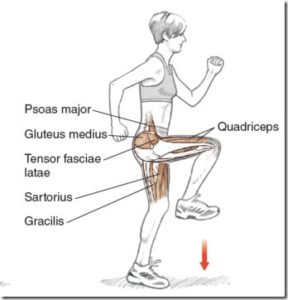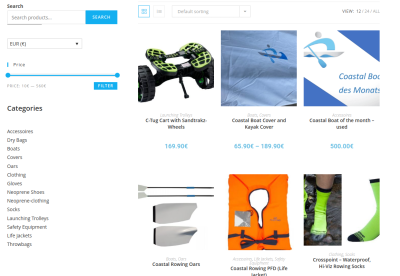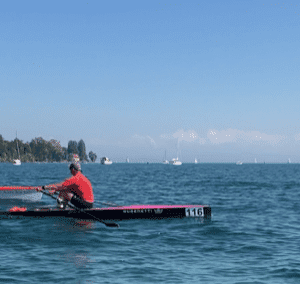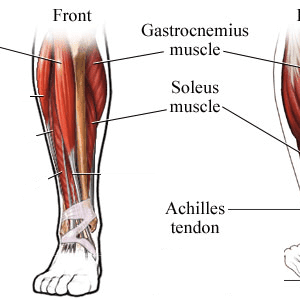Today follows part 2 of our series on rowing and flexibility! Today’s topic is Rowing and Flexibility – The Hip Flexor.
Rowing and Flexibility: The Hip Flexor
What is it responsible for, and why is it so significant to our rowing performance? When we row, we use this muscle group after every stroke. Although it is not at acute risk of injury, it benefits from extra attention, allowing us to train effectively and recover well. The so-called Thomas test gives you information about the condition of your hip flexor.
The hip flexor involves the straight thigh muscle, the hamstring, the lumbar, and the iliac muscle. Our straight thigh muscle is the largest muscle of the quadriceps and does most of the leg thrusting work. It is multi-talented – on the one hand, it acts as a knee flexor and on the other hand, as a hip flexor, depending on how it is needed at the time.
A shortened hip flexor poses a significant problem for rowers. After all, most of us sit all day anyway, and then we continue the same sports routine. Shortened hip flexors are common. They are among the main causes of lower back pain and inefficient leg thrust – the gluteus maximus does an inadequate job here. The pelvis tilts, and the domino effect continues, with shortened leg flexor (hamstrings), weak gluteus (buzzword: gluteal amnesia), and pronounced lumbar spine lordosis. The result: sitting upright becomes impossible, as does effective power transfer when pushing the legs. Back pain is pre-programmed. And another common problem also emerges – The Snapping Hip Syndrome.
Rowing and Mobility: The Hip Flexor – Here’s how to train it:
Now that you know about the importance of the hip flexor for us rowers, grab the foam roller again and use it to roll out your quadriceps, including the outer thigh side, please. This self-massage is extremely useful for recovering such a heavily used muscle group. Continue toward the pelvis – not directly over the hip bone, which can be very painful. Using a lacrosse or tennis ball, look for trigger points and work them for 30 to 90 seconds.
Hold the subsequent stretching exercises for about 2 to 3 minutes. You can find detailed instructions on YouTube on Will Ruth’s channel under “Strength Coach Will” in the video “Mobility for Rowers: Hip Flexor”. Important: Keep your upper body in an upright position at all times, and never arch your back.
Video: Rowing and Mobility – Hip Flexor
Strength training for the hip flexor
Problems with the hip flexor tend to be caused by shortening, less often by weakness. Therefore, we deliberately train the surrounding muscle groups. Bilateral exercises can contribute to shortening because the hip flexors must contract strongly to keep the trunk muscles erect. Single-leg exercises, on the other hand, stretch the inactive hip flexor (the back leg) while the front leg works. For this reason, single-leg squats are a fixed part of Will’s training plans-especially for oar rowers, too, to prevent imbalances.
Exercises emphasizing hip extension take the hip flexors through their full range of motion (FOM) while strengthening those muscle groups that provide good posture. On the other hand, if we only stretch the hip flexor and neglect the surrounding muscles, we are back to square one in our grievances. Effective exercises include the Hip Thrust, Pull-Through, Kettlebell Swing, and Romanian Deadlift to strengthen the Posterior Chain of muscles (also found on Will’s video channel).
Please note to focus on one thing at a time: the thoracic spine from the first part or the hip flexor. 10 to 15 minutes daily for 2 to 3 weeks will yield good results.
With this in mind, stay supple!







